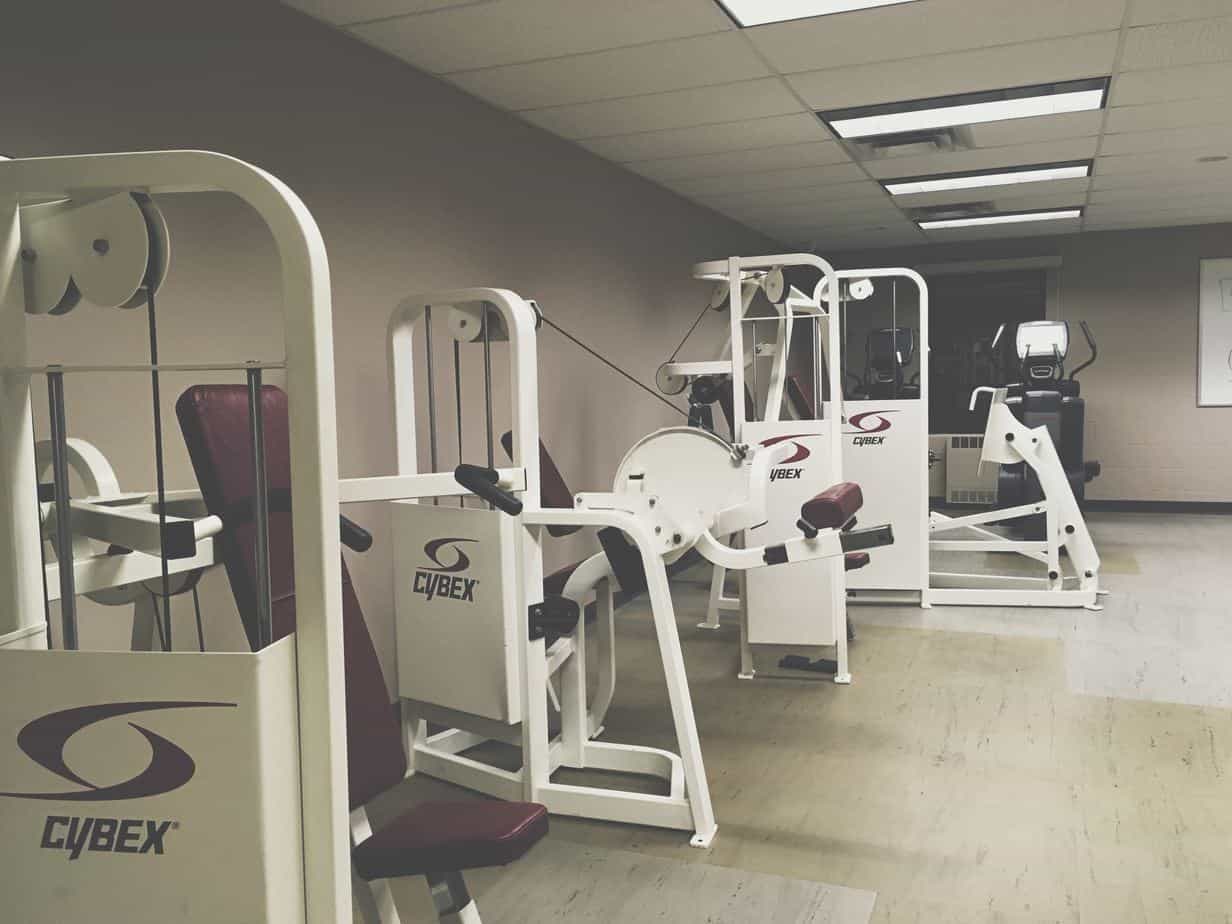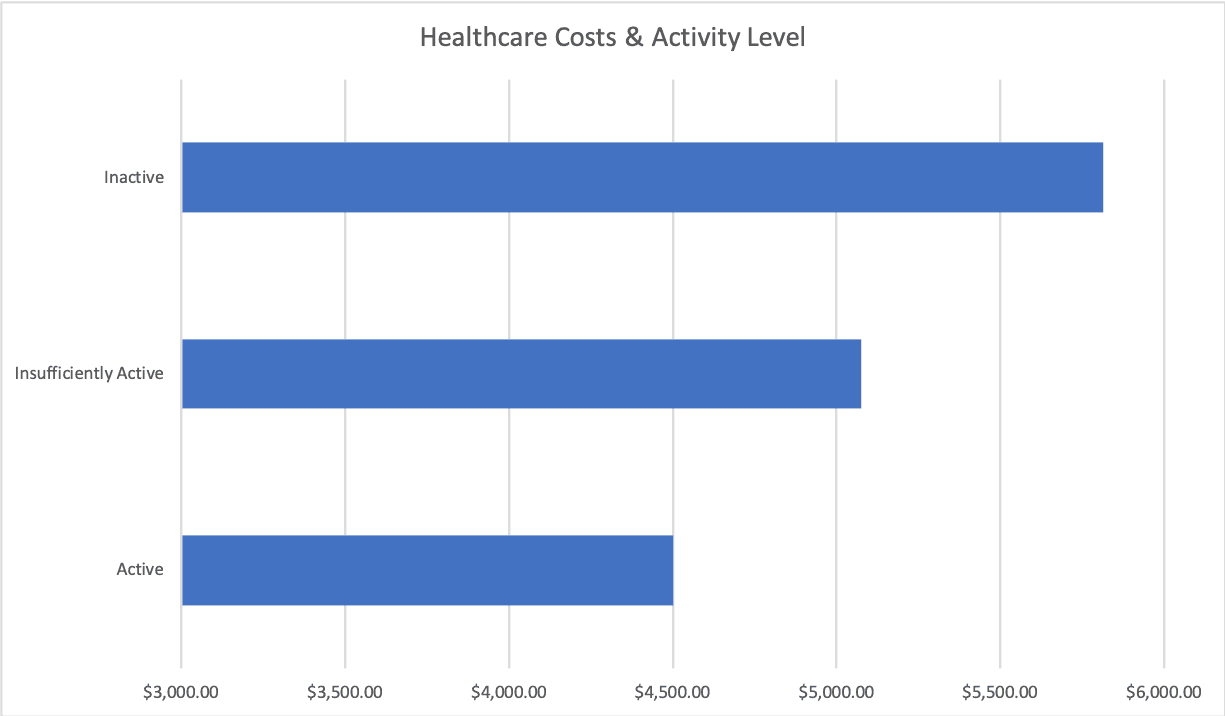Staying Fit on a Retirement Budget
Introduction
As you enter your 60s, you should be looking forward to a long and enjoyable retirement. According to the U.S. Census Bureau, the average retirement now lasts around 18 years, nearly two decades. You should be spending your time doing the things that you enjoy, things that you never had time to do when you were working and raising a family. This is a time in your life where you can focus on yourself. If you want to get the most out of your retirement, there are a few things you need to have going for you. First, you need the financial resources to not have to worry about money so that you can travel and do other things you enjoy. More importantly, you need your health, because no amount of time and money are worth anything if you aren’t healthy and able to enjoy yourself.

Health is crucial, but you may be wondering if retirees can afford it. Two of the most important factors in maintaining your health are diet and exercise, and at first glance both may seem prohibitively expensive. After all, the average gym membership in the United States costs around $60 per month, with prices rising even higher in other countries; organic food is notoriously costly. Staying fit already tests your willpower. Does it have to test your budget too?
So, can retirees stay fit on a fixed income? Absolutely, it’s possible to maintain your health and stay in shape on a budget, even a particularly tight one. We wrote this guide to to provide tips, advice, and ideas for staying fit without breaking the bank. By the end, we hope to have you convinced that better health is not only affordable (and will very likely save you money) but essential.
Staying Fit is More Important Than You Think
We hope you’re already convinced that taking control of your health and staying in shape are important. That said, it’s worth spending a little time explaining why it’s so important, perhaps more important than you believe.
As we age our metabolism slows down, we lose muscle mass, and our bones become more brittle. It is a natural part of the aging process. While stopping the aging process isn’t possible, you can slow it down significantly by staying fit.
Staying fit reduces your risk of illness and injury, and can slow down the natural age-related decline that we all experience.

We Lose Muscle as We Age
As you age, you begin to lose muscle mass. This process, known as sarcopenia, begins slowly in your 30s, at which point you can lose 3-5% of your skeletal muscle each decade if you are not physically active. Sarcopenia accelerates around the age of 75, and according to a recent study it impacts over 50% of people over the age of 70. Age related muscle loss has an enormous impact on health and quality of life:
- Risk of disability is around 2-4 times greater for older people suffering from sarcopenia
- The risk of a fall, which causes over 1/2 of accidental deaths in those over 65, increases dramatically
Although there’s no way to stave off muscle loss entirely, it can be greatly reduced through exercise, specifically strength training and weight bearing exercise.
We Lose Bone as We Age
Like the loss of skeletal muscle, our bones weaken as we age, also beginning around age 30 and increasing as we get older. This is known as osteoperosis. It is estimated that around 70% of those over 80 years old are impacted by osteoperosis. Many suffering from this disease don’t even know it until a bone breaks, which is a terrible way to find out there’s a problem.
Thankfully, osteoperosis is largely preventable and treatable, and staying fit is a big part of the solution: you can build and maintain the strength of your bones through proper diet and weight bearing exercise.
Physical Activity Declines When We Retire
It’s all too easy to become less physically active once you retire. If you had a long career, even one spent sitting behind a desk, you still had to be active. You had to dress, travel, go to meals, commute, and work with others. If you had a more physical job then the amount of energy you used on a daily basis was even greater. The point is that when you were working you were naturally out and about doing things and keeping physically active. It’s important that you don’t fall into the trap of living a more sedentary, inactive lifestyle once you retire.
Staying Fit is Easier Than You Think
You may be thinking that getting into great shape is something that you left behind with your youth. While it’s unlikely that you’ll be able to match what you could do in your 20s and 30s, you can still remain fit and active after retiring. Being fit and healthy will not only help to prolong your life by fighting conditions like sarcopenia and osteoperosis, but it will also enable you to live a more active and fulfilling life after you retire.
The good news is that staying fit isn’t that difficult. The better news is that exercising and eating right can even be fun and something that you look forward to each day.

Exercise Made Simple
According to the National Council on Aging, it is recommended that older people engage in the following types of exercise:
- Moderate exercise for at least 30 minutes five days a week
- Muscle-strengthening activities for two or more days a week that work all major muscle groups
However, only about 30% of seniors in the United States achieve these goals. One problem is that many older adults simply don’t know where to start. Thankfully, there are many effective exercise programs for you to try out. Just make sure to talk to your doctor first, then go ahead and find the one that’s right for you!
The NCOA has an extensive list of options, which we’ve included in our resources at the end of this guide. Here are a few of our favorite programs:
Geri-Fit
Program description
Geri-Fit is an evidence-based health promotion program and chronic disease self-management support program. Designed exclusively for older adults, Geri-Fit helps rebuild strength that’s been lost through the aging process to help ensure a higher level of function as we continue to age. The program requires a set of light dumbbell weights, a sturdy chair, a stretch band, and water to drink during the workout. There’s no dancing, choreography or floorwork and both men and women can enroll. Geri-Fit is challenging, effective and very safe to do. Participants will literally turn back the hands of time each time they do the workout and they will marvel at the results the program provides.
More Information
Healthy Moves
Program Description
Healthy Moves provides a simple exercise program for frail older adults, designed to build strength, increase flexibility, reduce falls and decrease pain. The program is provided by trained coaches who may be caregivers or care managers, in the participant’s home or community settings. The coaches also provide motivational phone support to help their senior clients set goals for improved physical health and plan next steps for incorporating exercise into everyday living.
More Information
http://www.eblcprograms.org/evidence-based/recommended-programs/healthy-moves
Be Proactive
The key to remaining fit, as you get older, is to be proactive. You don’t want to wait until you look in the mirror and realize you are in terrible shape and your health has started to significantly decline. Staying in shape only gets harder as you get older, so allowing yourself to start to decline could you start you down a path that you’ll find difficult to recover from.
Don’t wait any longer. Start watching what you eat a little more today. Start being more active today. Start to place more on an emphasis on the way that you feel today. You worked hard your entire life, so when it’s time to retire then you deserve to enjoy it. You won’t be able to do that if your health is suffering because you didn’t make it a point to stay fit.
Staying Fit is Cheaper Than You Think
Hopefully we’ve convinced you that your health and fitness are both essential and within your reach. However, you may still be concerned about affording it all. With that in mind, we’ve put together our favorite tips and tricks for healthy eating and exercise on a fixed retirement budget.
Eating Right on a Budget
How can you maintain a healthy diet without spending a fortune? The best way to do this is to eat at home where you have complete control over what goes into every meal. You probably already know that eating at home is less expensive than going out to restaurants, but you may not realize just how much you save. For example, imagine you order a chicken dinner at a restaurant. You will most likely end up spending around $16 once you factor in tip. Cooked at home, that same meal would cost only around $8 according to the Cheapism blog. Those are significant savings, with that added benefit that you can prepare the meal exactly the way you want it with ingredients that you know are healthy.
Here are other favorite budget-friendly eating tips:
Stick to the Staples
There are plenty of very healthy foods that can be had for cheap. A few examples –
- Canned tuna, $0.45 per serving
- Frozen veggies, $0.25 per serving
- Brown rice, $0.18 cents per serving
- Oats, $0.13 per serving
Count the Calories
Many older adults have no idea what a proper portion size looks like, making it very easy to overeat. This is both a waste of money and can lead to unwanted weight gain. With the help of a food scale, a measuring cup, and a free app for your smartphone, you can make sure that you only consume as many calories as you need each day.
Here are two of our favorite apps for monitoring your calories –
Using these apps is simple – scan the barcode on the food’s packaging or simply look the item up. Then measure out your portion size and keep track of everything. Not only is it simple, but you may enjoy it so much that counting calories turns into a fun game.
Watch the Prices
You can save on groceries by keeping track of what different items cost and then only buy what’s on sale each week and/or items that are at their lowest price. For example, your local grocery store may typically sell chicken for $3.99 per lb. If you monitor prices, you’ll notice that when chicken is on sale it costs $1.99 per lb and never a penny less. If you only buy chicken when it’s on sale, you save $2 for every pound you buy.
Only Buy What You Need
Once you’re in the grocery store, it’s easy to buy all kinds of things you don’t really need – we’ve all done it! The secret to buying only what you need is to make a list ahead of time and stick to it. You can do it the old fashioned way with pen and paper, or you can use a smartphone app like Out of Milk.
Find a CSA or Farmer's Market
Community Supported Agriculture (CSA) allows customers to form a collective group to buy directly from farmers. Farmer’s markets provide another way for you to buy from local farmers. Both help you to get great, healthy food at excellent prices. Here are two places to start:
While preparing your own meals is the best way to eat right and save money, you can still enjoy eating out when you feel like it. As long as you are making healthy choices at most meals, going out for the occasional cheat meal isn’t going to do you any harm.
Exercising on a Budget
While eating right can save you money, you may be thinking that spending money on a gym membership isn’t something you want to do. In fact, you may be on the type of budget that doesn’t have room for a monthly gym membership fee. The good news is that you don’t have to go to the gym to stay fit. You can work out at home or at a local park and get fantastic results. You don’t have to train like you did when you were younger – simple things like evening walks, swimming, biking, hiking, and even light weight training can be done on your own, without the need to pay a monthly gym membership.
Here are a few ways you can save money while getting an effective workout:
Buy Second Hand
You’ll be amazed at the deals you can find on second hand exercise equipment like free weights and dumbbells. A typical price to buy these items new is around $1 per lb. Used, you can often find them for around $0.50 per lb, although it is not unheard of for prices to fall as low as $0.25 per lb. What a deal! Make sure to check out:
- eBay
- Craigslist
- OfferUp.com
- Yard sales
Check Out the Local Park
Many local parks offer walking / running tracks and equipment to allow you to do bodyweight exercises such as pullups, dips, crunches. Plus you get the added benefit of being outside!
Try a Public Gym or Fitness Center
Still want to use the gym without paying a fortune? Many cities and towns offer public fitness centers that cost significantly less than private gyms. Some are even free. Your best bets are to contact your local Department of Parks and Recreation or check out your city or town website.
Find Your Y(MCA)
Although it isn’t free, the YMCA is also a cheaper alternative to most gyms. Many even offer financial assistance if you’re struggling to afford a membership. You can find one near you by clicking here.
Staying Fit Will Save You Money
As we age, staying fit is a necessity. It’s also far more affordable than you may have thought. What you may not realize is that staying fit will likely save you money – by reducing your risk of health-related issues as you get older, you’ll spend less on doctor bills and other medical expenses. According to the Cleveland Clinic, “60 percent of healthcare costs arise from chronic diseases: cardiovascular disease, diabetes, stroke, pulmonary disease and certain cancers. These conditions are almost entirely preventable.” The clinic also found that offering gyms, fitness classes and cooking advice to its employees lowered healthcare costs by nearly $15 million.
These results mirror those of a recent study of healthcare costs conducted by the Centers for Disease Control and Prevention (CDC). The study placed participants into three categories and measured the average amount that each group spent on healthcare.
Active
Definition: At least 2 1/2 hours of moderate intensity physical activity each week
Annual healthcare cost: $4,500
Insufficiently Active
Definition: Some moderate intensity physical activity but not enough to qualify as active
Annual healthcare cost: $5,076
Inactive
Definition: Less than 10 minutes of moderate intensity physical activity each week
Annual healthcare cost: $5,813

Being fit pays off. The bottom line is simple: you can stay fit without putting forth a herculean effort, you can afford to stay fit on a retirement (or any) budget, and most importantly, you can’t afford to not stay fit!
Resources
15 Healthy Foods for About $2, WebMD
Preserve Your Muscle Mass, Harvard Health Publishing
Exercise Programs That Promote Senior Fitness, National Council on Aging
Fitness Isn’t Just for the Wealthy: How to Stay Healthy on a Budget, Lifehacker
Is Cooking at Home Really Cheaper Than Eating Out?, Cheapism
Inadequate Physical Activity and Health Care Expenditures in the United States, Centers for Disease Control and Prevention
How a Healthier Lifestyle Will Reduce the Deficit, Cleveland Clinic